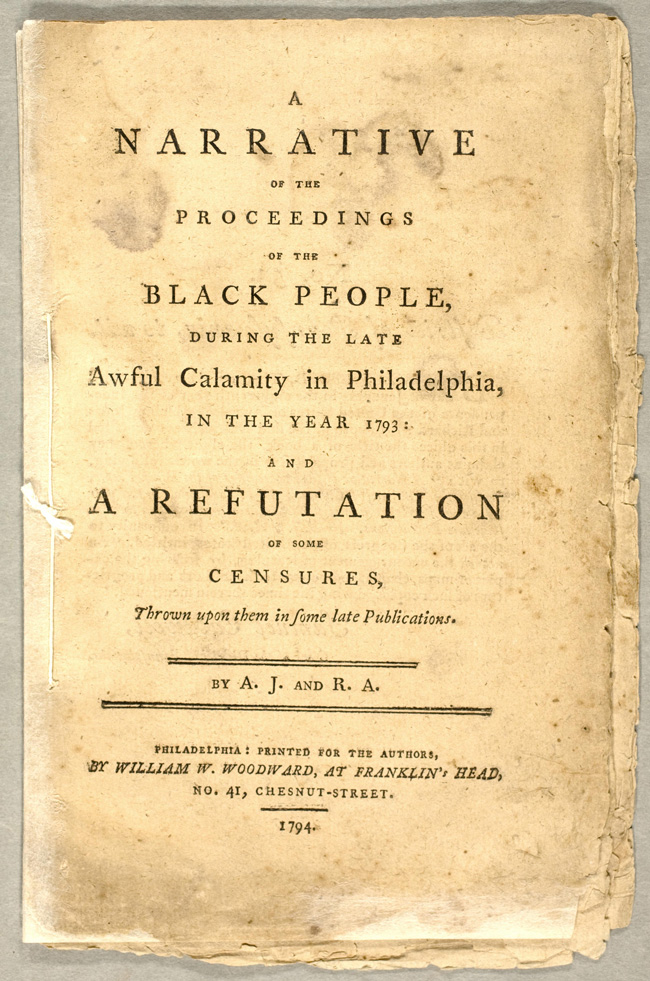In April 1787, Rev. Richard Allen and Rev. Absalom Jones co-founded the Free African Society (FAS) in Philadelphia, Pennsylvania. As two of the earliest African Americans to become ordained Christian priests, Allen and Jones sought to create a kind of community outreach organization with the FAS. It helped black Philadelphians satisfy some of their basic needs through education and employment opportunities. But after the turn of the nineteenth century, Allen and Jones parted ways over the religious direction of the FAS. Although both men had started their careers in the Methodist Church. Jones became a priest in the Episcopal Church in 1804. Many FAS members followed Jones and joined an already established Episcopal church in the city, while Allen considered starting an independent Protestant denomination of his own.
Allen founded the African Methodist Episcopal (AME) Church in Philadelphia in 1816. As the first independent African-American church in the United States, it appealed to Afro-Christian freemen and women who understood Allen’s theology as a force of liberation. In other words, Allen saw his socio-racial purpose in the pulpit as twofold. First, he advocated abolition in his weekly sermons, and second, he spoke against the vitriol that often defined antebellum race relations, especially in cities such as Philadelphia. Across town at the African Church of St. Thomas, Jones also condemned the evils of slavery in his sermons. In fact, Jones’ congregation even petitioned Congress about the 1793 Fugitive Slave Law, which kept free black communities living in fear.
At the American Antiquarian Society (AAS), an original copy of Allen and Jones’ 1794 co-publication concerning Philadelphia’s yellow fever epidemic is held in the archives. Entitled A Narrative of the Proceedings of the Black People, During the Late Awful Calamity in Philadelphia, in the Year 1793 [AAS online catalog record], it depicts the efforts of black Philadelphians at helping the city’s sick, regardless of race. Some whites wrongly believed that blacks were immune to the disease, but Allen and Jones refuted this idea, along with claims that they had somehow profited from the epidemic. Ultimately, AAS strives to preserve historical, literary, and graphic-arts materials prior to 1877 and Allen and Jones’ Narrative is certainly a unique aspect of AAS’ African-American collection in the antebellum period.

Allen and Jones, in their action protesting the racist practices of St. George’s Methodist Church, perpetuated and extended the spirit of the American Revolution. As a professor of American religious history, I have found over the years that the only students of mine who have even heard of Allen and Jones are a subset of my African-American students. This strikes me as regrettable at many levels, and as a mistake that ought to be rectified. I appreciate your publishing this note this morning, and I will share it on my Facebook page, too. All my former students will recognize the names!
this is not as helpful as i wanted it to be…
Dear Jennifer,
I am an American living with my wife Hanni in Berne, Switzerland, and feel grateful for your helpful background on Richard Allen and Absalom Jones. We are coauthors of two 2014 e-books focusing on working partnerships and targeting young adult readers. One of the books (Milestones of Working Partnership: Honing the Creative Edge) makes mention of Allen and Jones in entries for 1787, 1793, and 1812. We would like to add entries based on your iniput for 1786 , 1795, 1790, 1796. and 1806, Of course, we will credit your research. With best regards, Lyn (+ Hanni) Shepard
Hello, I’m wanting to get a clear understanding of their seperation; and what were their differeances that caused the seperation?